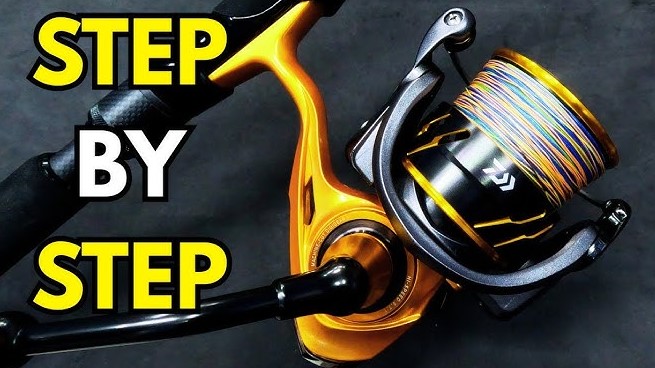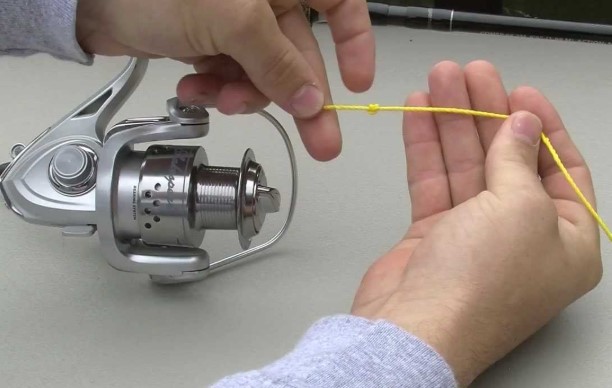Spooling a spinning reel correctly makes a huge difference in casting distance, accuracy, and reducing frustrating line tangles. Many anglers struggle with line twists, knots, or uneven spooling, which can ruin an otherwise perfect fishing trip.
Understanding the proper method ensures the line sits evenly on the reel spool, preventing wasted time and lost catches. Knowing which line to use, how much tension to apply, and the right technique helps maximize performance for every fishing session.
From freshwater bass fishing to saltwater adventures, a well-spooled reel handles smoother, casts farther, and lasts longer. Simple mistakes like overfilling the spool or failing to secure the line can lead to costly problems, but mastering this basic skill elevates every angler’s experience.
This guide breaks down the best steps and tips for spooling line on a spinning reel efficiently and effectively, so every cast feels effortless.
Best Way to Spool Line on a Spinning Reel
A spinning reel works best when the fishing line is spooled correctly. Poor spooling leads to twists, tangles, and breaks. Proper spooling saves time and makes fishing smooth. This guide gives step-by-step instructions and tips to spool line perfectly. Beginners and experienced anglers will find it easy to follow.
Why Spooling Line Correctly Matters?
Spooling is not just filling the reel with line. It affects your whole fishing experience:
-
Prevents Line Twist: Twisted line causes knots and tangles that can ruin a fishing trip.
-
Improves Casting: Properly spooled line allows longer and smoother casts.
-
Increases Strength: Evenly laid line reduces weak spots that can break under tension.
-
Prolongs Reel Life: Correct line placement prevents wear on reel parts and reduces friction.
Even small mistakes in spooling can make casting and retrieving frustrating.
Tools Needed
Before starting, gather the right tools:
-
Spinning reel: Choose one that fits your rod.
-
Fishing rod: Mounting the reel helps with tension.
-
Fishing line: Monofilament, fluorocarbon, or braided line.
-
Line cutter or scissors: For trimming knots.
-
Line holder or pencil: Optional, keeps spool steady while reeling.
-
Cloth or gloves: Helps maintain tension on the line.
Having all tools ready makes spooling easier and safer for your reel.
Step-by-Step Guide to Spool Line on a Spinning Reel

Step 1: Mount the Reel on the Rod
Mount the reel firmly on the rod. This gives stability and keeps the spool from moving. A stable setup reduces line twists and tangles.
Step 2: Open the Bail Arm
Flip the bail arm up. The bail guides the line onto the spool. Open it before attaching the line so the knot can be tied securely.
Step 3: Tie the Line to the Spool
Use an Arbor Knot, which is strong and simple:
-
Wrap the line around the spool.
-
Tie an overhand knot around the main line.
-
Tie another overhand knot at the tag end for extra security.
-
Pull tight and trim the extra line.
A strong knot prevents slipping while spooling.
Step 4: Close the Bail
Flip the bail back to the closed position. This ensures the line runs through the reel guides properly.
Step 5: Apply Proper Tension
Hold the line with your fingers or a cloth. Keep it tight while reeling. Loose line creates loops and knots.
Step 6: Start Reeling Slowly
Turn the reel handle slowly and evenly. Watch the line fill the spool evenly, side by side. Avoid stacking the line too much in one spot.
Step 7: Fill the Spool Correctly
Do not overfill. Leave about 1/8 inch (3 mm) from the spool edge. Overfilled spools cause line slippage or tangles. Underfilled spools reduce casting distance.
Extra Tips for Better Spooling
Reduce Line Twist
Twist happens when the line spins freely while spooling. Reduce it by:
-
Letting the spool hang on a pencil while someone reels slowly.
-
Avoiding spinning the line spool too fast.
-
Using a swivel if the line keeps twisting.
Maintain Consistent Tension
Inconsistent tension causes loose loops. Loose loops tangle easily and weaken the line. Hold the line gently but firmly.
Choosing the Right Line
Different lines need different care:
-
Monofilament: Flexible, easy to handle, stretches slightly. Good for beginners.
-
Fluorocarbon: Almost invisible underwater, less stretch, more sensitive.
-
Braided Line: Very strong, thin, no stretch. Handle carefully to avoid twists.
Check for Frays and Damage
Inspect the line before spooling. Frayed or old line weakens your setup and increases the risk of breakage.
Spool Slowly
Spooling too fast creates heat and friction, which can weaken the line. Slow and steady is best.
Keep the Reel Clean
Dirt, sand, or water inside the reel damages parts and makes spooling uneven. Clean your reel before adding new line.
Advanced Tips for Serious Anglers
Using a Line Conditioner
A line conditioner or lubricant can help reduce memory and tangles, especially for braided line.
Layering Line Correctly
For long sessions, some anglers use backing lines. Add a few layers of cheaper line first, then your main line on top. This prevents overfilling and improves casting.
Avoid Over-Tightening Knots
Knots that are too tight can cut into the line when tension increases. Pull gently and evenly.
Store Reel Properly After Spooling
Keep the reel in a dry place and avoid direct sunlight. Heat and moisture damage line and reel components.
Final Thoughts
Properly spooled line on a spinning reel improves every part of fishing. Smooth casting, fewer tangles, and stronger line make fishing easier and more enjoyable.
Careful attention to tension, knots, and line type ensures the reel works longer and performs better. Following these steps turns spooling from a chore into a simple, reliable process.
FAQs
Q1: Can I spool a reel without a rod?
Yes. A rod makes tension easier, but a stable surface or line holder works too.
Q2: How much line should I put on the reel?
Fill the spool until 1/8 inch below the edge. Overfilled line tangles easily; underfilled line reduces casting.
Q3: How do I prevent line twist?
Keep tension steady, spool slowly, and let the line spool hang on a pencil or holder.
Q4: How often should I replace fishing line?
Replace line if it shows frays, weak spots, or memory. For heavy fishing, check after every few trips.
Q5: Can braided line be used on all spinning reels?
Yes, but braided line needs careful handling to avoid twists and tangles.





